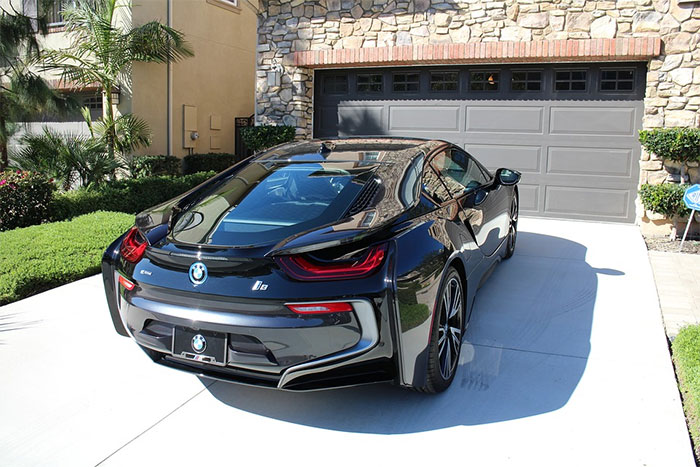Of all the things that revolutionize our lives, technology is surely one of the most impactful. And as we spend a lot of time in our cars for commutes, carpool lines, trips and more, technology is quickly infiltrating our automobiles. Here are eight of the most impactful technological advances that have happened to our cars.

Table of Contents
1. Hybrids
Fuel efficient and increasingly kind to Mother Nature, hybrid cars came to be in 1997 when Toyota produced and introduced the first Prius.
2. Anti-lock Brakes and Stability Control
Thanks to Chrysler, the “Sure Brake” was introduced to the 1971 Chrysler Imperial. While Ford tried something similar in 1970, their model of anti-lock brakes called Sure Track was only added to the rear wheels of their Lincoln Continentals.
But why are anti-lock braking systems important? Because they help prevent automotive skidding by preventing the brakes from locking when in use. ABS (Anti-lock braking systems) operate quickly and, most often, better than a driver could. ABS are now mandatory in at least the United States, as of 2013.
3. GPS Satellite/Nav
In-car navigation comes from satellite information that helps correlate on-road position with position data from the satellite itself. The first wireless navigation system was created in 1961, but the research and innovation came to the automotive world in 1966 from General Motors. Eventually, GM’s creation would become OnStar. Needless to say, this is one of the most impressive technological advancements in the automotive world to date.
4. Airbags Galore
There wasn’t always a restraint or security measure implemented to prevent people from getting injured or ejected from a car during an accident. A little bit earlier than some of these other technical advancements, airbags as we know them today began development as early as the 1950s.
The technology here is both preventative and protective. And now, cars aren’t manufactured without them.
5. Cruise Control
Cruise control seems like a staple in cars nowadays. Maintaining a steady speed is easier with cruise control, helping drivers stay at or near the speed limit while they’re driving.
At this point though, there are some cars that have such advanced cruise control that it’s adaptive meaning that the position of other cars on the road can affect the cruise control of one individuals car.
6. Bluetooth
From “jaw bone” pieces that fit only in an ear to wireless technology that allows drivers to be hands free, bluetooth technology has seriously revolutionized the way people experience car rides and even interpersonal communication.
Originally crafted and produced in 1989, bluetooth technology has become renowned worldwide for its availability in cars after 2006.
7. Backup Camera
Some people aren’t meant for backing up. There’s a rear blind spot in most cars, meaning that at some point or another, many drivers have trouble backing up or seeing out the back window. There’s enough associated wreckage with that particular blind spot to encourage people to consider that blind spot the killing zone.
In April of 2000, the Nissan’s Infiniti luxury division showcased a RearView monitor which transmitted to an LCD screen in-dash. This technology was released in the US in March, 2001. Incidentally, the “associated wreckage” with the rear view blind spot of a car has decreased with the inclusion of the backup camera.
Beginning this past May of 2018, all cars sold in the U.S. will need to have backup cameras.
8. Turbocharging
If it weren’t for the Fast and the Furious, many people wouldn’t know what turbocharging is… however, this technology increases the amount of air going into the engine to create more power. With that being said, it should come as no surprise cars are able to go faster than ever. The Energy Recovery System, implemented in many Formula 1 race cars, enables them to be not only fuel efficient, but more powerful than ever.
Obviously, technology has taken cars a long way. But what does the future hold for the evolution of technology and cars?












